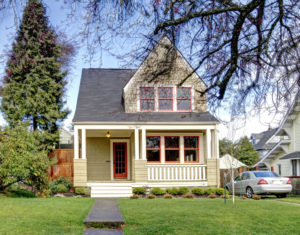 Last week, we discussed the USDA Loan or the Rural Development Loan as a loan option for homebuyers. This week, we want to go into some of the logistics of the USDA loan and what sets it apart from loans such as the VA loan or the FHA loan.
Last week, we discussed the USDA Loan or the Rural Development Loan as a loan option for homebuyers. This week, we want to go into some of the logistics of the USDA loan and what sets it apart from loans such as the VA loan or the FHA loan.
Fees
The USDA loan is a 100% loan, there is no money down required but they do have fees associated with them, similar to FHA Loans. You will have an upfront fee that is financed with the loan and a monthly fee as well, which covers the lender in case of default. The upfront fee is roughly 2% of the loan about and .35% of the base loan amount per month.
Income limitations
There are income limitations when it comes to the USDA loan, which is very different than the other loans we have discussed in the past. A household’s income cannot exceed a certain amount. For example, a household with between 1 and 4 people in Greely cannot exceed $78,900 per year. Furthermore, when applying for a USDA loan, underwriters look at the entire income of the household, not just the person applying for the loan. For example, if you leave a spouse off of the loan because they have a bad credit score, they will still take in to account that person’s income. This could also apply to parents living in the home, spouses, and occasionally children. Anyone who is living in the home will be subject to consideration. They’ll also look at alimony income, child support, interest earned on investments, any source of income will be factored in.
The reason these income limitations are in place is that these loans are specifically designated for people who are in a situation where they truly need the loan: they are in lower income areas and it may be a little more difficult to find housing in those areas. The USDA loan allows these people to find a home and do it right.
Credit
The USDA has its own underwriting system and does not use the same system that the VA or FHA use. It is called the Guaranteed Underwriting System. In addition to an application going through the underwriting system, the Office of Rural Development also spends time looking through the applications.
Credit restrictions are much tighter on a USDA loan compared to an FHA or VA loan. This can be attributed to the fact that no money down is required. For a USDA loan, they typically look for a FICO credit score in the 640-660 range. Whereas an FHA loan can go as low as 580. However, after an application goes through the automated underwriting system, the underwriter also has the opportunity to look at all compensating factors and prepare a case for the Office of Rural Development to look over.
Debt to Income Ratio
The debt to income ratios for the USDA loan are very similar to the FHA and VA loan in that they don’t want the total to exceed 41%. Therefore, when the automated underwriting system takes everything into account, all your expenses should not exceed 41% of your gross income.
Closing Costs
The closing costs for a USDA loan are a little different than the FHA or VA loan. The closing costs can be financed into the loan if, for example, the sales price comes in lower than the appraised value. This can’t always be done, but it is a possibility. In other circumstances, the seller can pay the closing costs.
Refinances
Refinances are only available if you have a rural loan. If a property gets rezoned, you can’t refinance into a USDA loan. The home must already be under a USDA loan. You also cannot, in most circumstances, have multiple USDA loans but you can use the USDA loan multiple times if you decide to move or purchase a new home in another rural area.
Talk to a loan officer today to see if the USDA loan is a good fit for you. It all depends on your specific case, and the home you are looking to buy. If it is in a rural area, and you qualify for the loan, it may be a great option for you. We would be happy to help you with the process.
 Kristy Noll
Kristy Noll
DE Underwriter
 Cheri Landin
Cheri Landin
NMLS #68929

